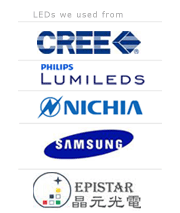News
Search
Popular search



Everlight has amended its LED patent-infringement lawsuit against Nichia, and has accused its rival of deliberately misleading the US Patent and Trademark Office by quoting fictitious experimental results relating to phosphors for white LEDs.
Taiwan-based LED maker Everlight Electronics Co., Ltd. has stepped up its LED patent battle with Nichia, accusing its Japanese rival of using fictitious experiments and results to deliberately mislead the US Patent Trademark Office (PTO). The accusations relate primarily to US patent no. 5,998,925, which is a fundamental patent covering the composition of certain types of phosphors used to make white LEDs.
Everlight, together with co-plaintiff Emcore, has filed an amended version of its complaint against Nichia in the US District Court for the Eastern District of Michigan. The original complaint was filed on April 19, 2012.
The amended complaint says that individuals involved with the filing for US patent no. 5,998,925 “made misrepresentations to the PTO with the specific intent of deceiving the PTO in order to obtain broader protection to which Nichia was not lawfully entitled.”
Specifically, says Everlight’s complaint, the patent includes examples of phosphors that Nichia “never could have made…because they are chemically unstable using the type of fabrication methods Nichia described in the ‘925 patent.”
The complaint seeks a declaratory judgment of non-infringement, invalidity and unenforceability of the ‘925 patent and one other Nichia patent, no. 7,531,960. The complaint also alleges infringement by Nichia of US patent no. 6,653,215, which covers LED metallization technology.
The ‘925 patent
US patent no. 5,998,925 was filed on July 29, 1997 and issued on December 7, 1999. It covers garnet-type phosphors activated with cerium that contain at least one element from the group of rare-earth elements Y, Lu, Sc, La, Gd and Sm, and at least one element from Al, Ga and In. This includes the commonly-used LED phosphor YAG (cerium-doped yttrium aluminum garnet).
The patent is fundamental in terms of white-LED phosphor technology. Everlight’s complaint says that there are over 20 other Nichia patents and pending applications that relate to phosphor technology and that build on the ‘925 patent. The Google page for the ‘925 patent shows a large number of patents that reference the’925 patent. It is reasonable to assume that the ‘925 patent has been included in a number of the cross-licensing agreements that Nichia has entered into with various rival LED makers.
Experimental results
The ‘925 patent contains a number of examples of different phosphor materials, and says that Nichia fabricated 100 samples of LEDs using each of these phosphor types. Everlight’s complaint says that Nichia could not have made the phosphors in the manner described, because the materials are chemically unstable.
Example 12 from the ‘925 patent discusses a phosphor with the general formula Y3In5O12:Ce. Essentially this is YAG with In substituted for Al. Everlight’s complaint says that Y3In5O12:Ce is “not a thermodynamically stable compound as described…and is therefore fictitious.”
Example 8 discusses a phosphor similar to YAG in which Gd is substituted for Y, giving the general formula Gd3(Al0.5Ga0.5)5O12:Ce. Again, this material is described in the complaint as being unstable and therefore fictitious.
Everlight’s complaint says that “individuals with a duty to disclose intentionally failed to disclose to the PTO that certain fictitious examples in the specification described experiments that had not been conducted.” The complaint goes on to say that such “misrepresentations and omissions…were intentional and were intended to deceive the PTO.”
These are strong words. If proven, the complaint could see the ‘925 patent ruled invalid and unenforceable in its entirety. Because of the ‘925 patent’s fundamental nature, as described above, the consequences with the LED industry could be far reaching.
Recent timeline
Nichia and Everlight have a long history of LED patent disputes, but activity has increased in the last several months, as described below:
April 19, 2012:
Everlight and Emcore file lawsuit against Nichia in the US.
April 24, 2012:
A Nichia press release announces two patent-infringement lawsuits filed in Germany against Everlight and its German distributor Future Electronics Deutschland GmbH. These claim infringement by a white LED product from Everlight of Nichia’s YAG patent EP 936 682 (DE 697 02 929). This patent is a European counterpart of the ‘925 patent discussed above.
April 27, 2012:
Nichia files a patent-infringement lawsuit in Germany against Zenaro Lighting GmbH, an LED lighting company mainly owned by Everlight, and the German distributor REGO-Lighting GmbH. The target is an office light containing “white LED tubes” that allegedly infringe Nichia’s YAG patent EP 936 682 (DE 697 02 929).
May 24, 2012:
An Everlight press release discusses a decision by the Japan Patent Office (JPO) following an invalidation action filed by Everlight. The JPO ruled that claim 1 of Nichia’s YAG white-light LED patent no. JP 3,503,139 is invalid.
May 29, 2012:
A Nichia press release says that Everlight has filed patent nullity proceedings with the JPO against 19 Nichia patents. One of these is JP 2,927,279, covering white LEDs made by combining blue LED chips and YAG phosphor. The JPO held on April 9, 2012 that this patent is valid. Nichia also says that two other patents, JP 2,778,349 (electrode patent), and JP 2,540,791 (anneal patent), were also found by the JPO to be valid.
June 4, 2010:
An Everlight press release says that Nichia’s patents JP 2,778,349 and JP 2,540,791 (see section above) have expired in April 2012 and December 2011, respectively.



